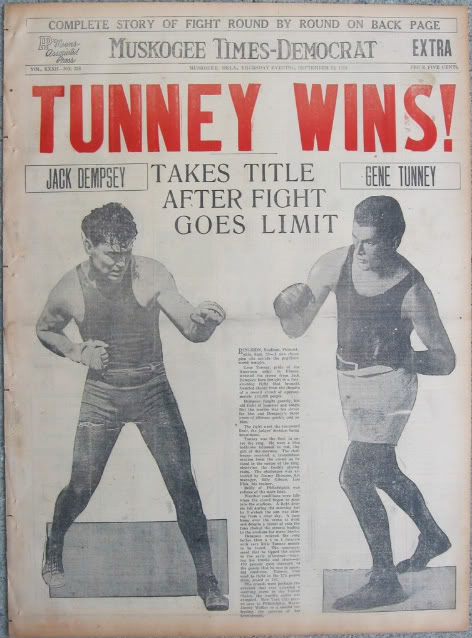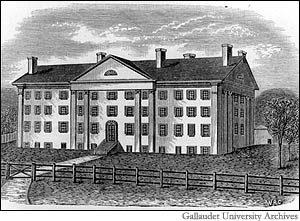Boxing has been part of American culture since the early 1800s. The popularity and notoriety of boxing comes from the legendary characters and fights in its illustrious history. Legendary men such as Floyd “Money” Mayweather, “Sugar” Ray Robinson, Muhammad Ali, “Smoking” Joe Frazier, and Ezzard Charles have produced timeless classics. Bouts such as “the Trilla in Manila” and “Sugar Ray Leonard vs. Roberto Duran II” are a constant reminder of boxing’s grandeur and appeal. However, there was one fight that preceded these and is still as relevant and important as it was when it occurred.1 This bout is known as “The Long Count Fight.” The two characters of this legendary tilt were Jack Dempsey and Gene Tunney.

Dempsey and Tunney were two of the best fighters of the 1920s and each went on to have hall of fame careers. Jack Dempsey was known as the “Manassa Mauler” and was regarded as the people’s champion for his gritty fighting style and charismatic charm. His counterpart, Gene Tunney, was a retired Marine, who was regarded as an intellectual and thus went about boxing with a cerebral and surgical approach.2 These two had met in the ring in September of 1926, and Tunney had been the victor. However, Dempsey was as determined and hungry as ever for another chance to triumph over Tunney. Their rematch the following year would be legendary.
The Long Count Fight was fought on September 22, 1927, and it was fought at Soldier Field in Chicago. Prior to this fight, there had been a new rule implemented that stated that if a combatant was knocked down, the aggressor had to go to a neutral corner before the referee could begin the ten count, which would determine whether the match was over or whether it could resume.3 This rule is what made this fight so controversial.
The first six rounds were going in Tunney’s favor. He was besting Dempsey and the physical toll boxing had taken on Dempsey’s body was beginning to show. It was beginning to look like a repeat of their first encounter. The sixth round was over and the fight was looking like a victory for Tunney; that is, until the fateful seventh round arrived. In the seventh round, Dempsey knocked Tunney down to the mat. However, the referee did not start counting until Dempsey went to a neutral corner, which gave Tunney an extra seven to eight seconds to recover. Dempsey hadn’t been used to the new rule, and as a result, for the rest of that round, Tunney was able to avoided Dempsey. For the rest of the fight, Tunney held his lead on points, even though the crowd showered Tunney with boos for having taken advantage of the long count.4 The crowd also cheered for their man Dempsey until the bitter end. Unfortunately, Tunney was able to avoided Dempsey for the rest of the fight, and eventually won on points. After this fight, one of the greatest heavyweight fighters of all time, Jack Dempsey, retired.
Many believed that the fight had been rigged by way of the referee; others believed that gangsters, such as Al Capone, had influenced the fight.5 In fact, Jack Dempsey once stated “I positively was approached by people in Chicago. I was, in fact, told that for $100,000, I could win the heavyweight championship.”6 Although marred by controversy, neither of those speculations have been definitively proven. But there are many who contend that Dempsey should have been the rightful winner and not Tunney. While the record books will say that Tunney won, it will not be without a metaphorical asterisk. Although Dempsey lost, he was remembered by many as a people’s champion while Tunney was vilified for his role in the match, but still highly respected for his boxing style. Years after this fight, Tunney and Dempsey became close friends and both went on to be boxing Hall of Fame members.7 Both were, are, and forever will be intertwined due to the controversial Long Count Fight.
- Roger Kahn, A Flame of Pure Fire: Jack Dempsey and the Roaring ’20s (New York: Harcourt Brace & Co, 1999), 86. ↵
- Roger Kahn, A Flame of Pure Fire: Jack Dempsey and the Roaring ’20s (New York: Harcourt Brace & Co, 1999), 86. ↵
- Bobby Bearden, “The Time Tunnel: 75th Anniversary of ‘The Long Count,'” Boxing 247, no. 1 (March 2017): 1. ↵
- Roger Kahn, A Flame of Pure Fire: Jack Dempsey and the Roaring ’20s (New York: Harcourt Brace & Co, 1999), 422. ↵
- Bobby Bearden, “The Time Tunnel: 75th Anniversary of ‘The Long Count,'” Boxing 247, no. 1 (March 2017): 1. ↵
- Jack Dempsey, “In This Corner,” Saturday Evening Post 204, no. 9 (August 29, 1931): 25–38. ↵
- Roger Kahn, A Flame of Pure Fire: Jack Dempsey and the Roaring ’20s (New York: Harcourt Brace & Co, 1999), 422. ↵



65 comments
Lianna Ybarra
I like how you went outside of the box and wrote an article on the boxing! It really brings a different feel to the website! I think you did an awesome job on this article and felt like you used great use of scholarship when writing this article. I still like though how you ended with the two boxers ended up being life long friends!
Mario Sosa
With such controversy, I was surprised to read that Dempsey and Tunney became good friends after the fight. It is cool to think that boxing was such a popular sport back in the 1920s as it is now. Reading this article now makes me want to find film footage of this fight. This was a really fascinating article, good job!
Aaron Jaramillo
This is a great article Oscar. I love watching boxing but like many never knew the history of it. It is interesting to see how the sport has changed and evolved over time. Also how the techniques have changed over time and how smarter the boxer becomes. Also some legendary boxers I would’ve liked to see in your article were “Iron” Mike Tyson and Evander Holyfield.
Hayden Hollinger
I am surprised I hadn’t read this article before. I love reading sports articles and this is one of my favourite that I have seen published on here. I liked your intro and I knew from that point that I was going to enjoy reading your article. I liked learning about the sport and this fight in particular from the 20s and the corruption that possibly surrounded it. Although $100,000 was an incredible amount of money back then, it is crazy to think how much the sport has changed and how much money now surrounds the sport at the highest level.
Faisal Alqarni
Hello Oscar, I have never been a fan of boxing, but there is something very manly about the sport that reading your article it awakens some very primal instinct in me that it has me become very interested in the sport, especially the describing of the rounds. It seems like you point out that the rivalry within the sport does not change as much from the times of Dempsey to present times when Manny Pac and Floyd Mayweather are fighting it is all a very similar sport, I think it keeps it interesting and builds on the anticipation. Despite the various theories on why Dempsey lost I do think the long count was one of the reasons he lost because like you said he took too long to get back to his neutral corner thus giving Tunney enough time to recover from the knock down and with Dempsey tired from getting Tunney to the mat it is easy to see how Dempsey defeated Tunney. Then again he referee could also have been compromised but then we will never know but it is good both ended up as boxing legends like you pointed out. Great article Oscar.
Luke Trevino
Very Good article. I love boxing but never really knew some history behind it. It sucks that Tunney won based off of points and Dempsey did not win the title. I bet the fans were enraged at the fact of this. What I did find very cool was that their hard work wasn’t for nothing and they were both inducted into the hall of fame. Overall very good article! Keep up the good work!!
Lianna Ybarra
What an interesting article! Your article gave great insight to the world of boxing in the beginning and was structured very well until the end. I have never really been a huge fan of boxing but I know of a people people and matches and had never heard of this one. I think it’s definitely controversial how the boxer had to go into the corner before the referee would start counting. That can add a good 8-10 seconds for the other person to recover like Tunney had. I like how you added at the end though, that the two boxers became friends after the fight and remained on good terms despite the controversy.
Mariana Govea
What an interesting article! I never knew boxing had been around since that time! Ive never really been into boxing it has never caught my attention! However my family has always gathered together with friends to watch the matches!Its cool how you researched how boxing has changed throughout the years its crazy to see how it all started to what it has become now! Well written article and researched as well as good choice of images !
Erick Martinez
This was a very well written article with great structure. I do not follow boxing and had never before heard of the long count fight. It is interesting to see how rule changes in sports tend to bring about controversy. I can think of many instances where an outside decision, rule, or call greatly affected the final outcome in a popularized sporting event and sparked anger and arguments among devout fans.
Alyssa Valdez
Very interesting article! I know tons of people who dedicates their lives to boxing and take it very seriously. My own family makes an entire party whenever an important boxing match is occurring. Many of the boxers listed in your article have become a huge influence for others and I think your article highlights that. I thought your article was very enjoyable.